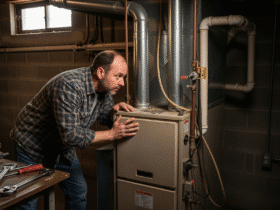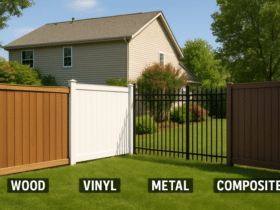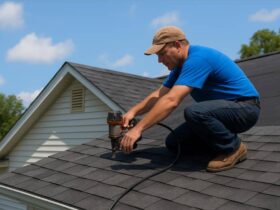Table of Contents:
- Understanding Roof Failures: The Nature of the Problem
- Weather-Related Roof Failures
- Installation and Material Defects
- Neglected Maintenance and Drainage Issues
- Structural and Load-Related Factors
- Signs Your Commercial Roof Is at Immediate Risk
- Action Steps When a Roof Fails Unexpectedly
- The Importance of an Emergency Response Plan
- How Professional Partnerships Support Fast Recovery
- Ongoing Prevention and Building Resilience
Understanding Roof Failures: The Nature of the Problem
Commercial roof failures represent a critical concern for businesses of all sizes and sectors. Unlike slow-developing deterioration, a sudden failure often produces dramatic and costly consequences in hours or even minutes. These events can range from severe water leaks and interior flooding to partial or complete collapses, resulting in lost productivity, damaged assets, and potentially hazardous conditions for employees and occupants. Many commercial roofs conceal layers of insulation, vapor barriers, and drainage components, and weaknesses anywhere within these layers can go undetected without routine and thorough inspections. Roof failures also tend to compound: a small breach in the membrane can allow moisture into insulation, weakening fasteners and supports, and setting the stage for larger, abrupt problems. This is why having access to fast, professional emergency commercial roof repair—and a clear plan to use it—is vital for business continuity. Understanding how failures develop helps facility managers and property owners move from reactive to proactive strategies. Instead of waiting for disaster, businesses can spot vulnerabilities early, respond swiftly, and minimize downtime. The distinction can be game-changing in environments where interruptions cost thousands of dollars an hour.
Weather-Related Roof Failures
Extreme weather events are among the most common triggers of sudden commercial roof failure. Wind, rain, hail, snow, freezing, and thawing cycles exert powerful forces on roof surfaces, seals, and underlying structures. Hurricanes and tornadoes can subject roofs to destructive lateral and uplift forces capable of tearing away membranes or even peeling entire systems from their fastenings. Sudden torrential rains test drainage limits and expose weak areas in waterproofing; clogged or undersized drains and scuppers can leave water ponding on the roof, eventually forcing its way inside.
Hailstorms, increasingly common in many regions, are notorious for causing widespread punctures, bruising, and granule loss on roofing materials. These minor injuries greatly accelerate aging and set the stage for future leaks. Cold climates are not exempt either. The weight of accumulated snow and ice, especially if left unaddressed, presents a serious risk of overload that can cause collapses, sometimes with little to no visible warning. According to FEMA and other government agencies, building codes now emphasize the need to account for “100-year” weather events, underscoring the urgency of preparedness.
Roofs in densely built urban areas may also have to contend with falling debris during storms, such as tree limbs, signage, or nearby building materials. Each of these stressors can initiate a failure or worsen existing trouble spots. After every major weather event, inspecting for hidden tears, loose flashings, or impact damage is critical to keep minor problems from becoming emergencies.
Installation and Material Defects
Even the best roof design can be damaged by poor installation or defective materials. Installation errors vary from the obvious—such as incomplete seams, improper overlapping, and missing fasteners—to subtler mistakes like under-torqued bolts or misapplied adhesives. Over time, these faults may lead to sudden system breaches when stressed by wind, rain, or snow. Sometimes, a perfectly sealed roof section fails simply because the wrong material or fastener was used for local climate conditions or intended rooftop loads.
Material defects can also be insidious. Roofing membranes past their shelf life, insulation boards with insufficient compressive strength, or adhesives that break down under UV exposure may all appear normal at installation, but their failure can be swift and unexpected. Such issues underline the value of verified suppliers, manufacturer warranties, and the oversight of experienced, credentialed contractors.
Choosing the right installation method and product specification for each building protects against future emergencies. Matching new materials to existing systems is paramount, even in retrofit or repair projects. Failure to do so is a prime source of rapid, large-scale roof problems.
Neglected Maintenance and Drainage Issues
Ongoing maintenance is one of the least glamorous but most vital aspects of commercial roof management. Maintenance is often deferred in favor of more urgent daily needs—until a crisis emerges. A disciplined inspection and cleaning routine almost always catches small issues before they evolve into emergencies. Clogged drains, gutters, and scuppers are chief among preventable problems. After a storm, a few inches of water gathering can add tons of unexpected weight, stress membrane welds, and accelerate aging and leaks.
Commercial roofs should be checked seasonally for debris buildup, punctures, seam separation, and animal or insect activity evidence. According to building industry research, a regular maintenance plan coupled with professional contractor inspections reduces the likelihood of sudden catastrophic failures dramatically. In between professional checkups, staff can be trained to look for warning signs—such as growing stains, blisters, or pooling water—which may otherwise go unnoticed.
Lack of routine care risks more than leaks; it can shorten roof lifespan, void warranties, and inflate insurance premiums. Investing in maintenance prevents small headaches from turning into emergencies and ensures your commercial roof remains ready to withstand surprise stressors.
Structural and Load-Related Factors
Beyond water and weather, commercial roofs face challenges from the loads they bear. Adding new equipment, such as HVAC units, solar panels, or green roof installations, can stress framing and decking. Over time, structural elements can lose strength due to dry rot, corrosion, prior leaks, or even concealed fire or pest damage. If not professionally detailed, each new hole cut for utility access or support attachment can introduce a long-term leak risk or weaken an overloaded section.
Engineers design commercial roofs for specific live and dead loads, but building usage changes and expansions can outpace the original assessment. Snow and water accumulation, often overlooked, add critical pounds that can push a roof to failure, especially if the load is unevenly distributed. Regular reviews and consulting with a structural engineer about any modifications or new equipment ensures that unforeseen stresses do not compromise long-term safety.
Signs Your Commercial Roof Is at Immediate Risk
Detecting trouble early is often the key to avoiding disaster. Watermarks, sagging ceiling tiles, discolored walls, unexplained spikes in humidity, popping or cracking noises, or sudden drafts are all red flags. Signs from the roof include bulging seams, ponding water, torn membranes, rusting fasteners, and vegetation growth. When these signals appear, time is of the essence—underlying damage may already be advanced. Technology like moisture meters or infrared scans can expose hidden water pockets or insulation failures that aren’t yet visible, enabling repairs before a full failure occurs.
Enforcing a culture of “if you see something, say something” helps ensure small anomalies don’t get overlooked. Training maintenance and janitorial staff to recognize and report these symptoms is a simple step with far-reaching benefits.
Action Steps When a Roof Fails Unexpectedly
A calm, organized approach is essential when a commercial roof fails without warning. The primary concern is always the safety of everyone on site: evacuate portions of the building if there is evidence of collapse, or hazards such as flooding near electrical panels or wiring. Second, isolate the trouble area to minimize water spread and protect sensitive storage or electronics by elevating or covering with waterproof barriers. Activate your building’s emergency plan, alert pre-selected contractors, and document damage with photos and detailed notes for professional diagnosis and insurance.
Contact a provider specializing in emergency commercial roof repair to secure and stabilize the damaged section. Temporary solutions, such as installing tarps or temporary drainage, can make a critical difference while you await professional service. Post-event, carefully review any adjustments needed to existing emergency procedures, maintenance rhythms, or contractor partnerships to better prepare for the future.
The Importance of an Emergency Response Plan
The value of a detailed emergency roofing plan cannot be overstated, yet many businesses delay creating one until an emergency has already happened. A robust plan includes clear instructions for staff roles, emergency contacts, utility shut-off locations, digital and hard copies of building schematics, and pre-drafted communication templates for insurance or stakeholders. Practicing the plan with live drills makes the process second-nature and reduces emergency chaos. Reference guides from organizations like FEMA can supply useful templates and checklists.
Assign a plan steward—often a facilities manager—and ensure succession in case of absence. Annual review and debriefs after any minor event keep the plan fresh and functional. Over time, a culture of preparedness filters down through the organization, reinforcing reporting and readiness behaviors at every level.
How Professional Partnerships Support Fast Recovery
Forging long-term relationships with qualified commercial roofing professionals delivers peace of mind and speed during crises. An expert partner will know your building layout, access points, preferred communication styles, warranty and insurance restrictions, and the history of repairs and renovations. This established understanding minimizes “onboarding” time during emergencies and qualifies you for swift, priority response.
Reliable providers can also deliver ongoing value through semiannual roof audits, repair recommendations, staff training, and holistic support that hardens your building against emerging risks. Seek firms with deep expertise in your roof type, insurance coverage, and advanced diagnostic tools—from drone imaging to moisture mapping. The best partners become trusted advisors, not just vendors.
Ongoing Prevention and Building Resilience
True resilience is built from a combination of routine vigilance, proactive improvements, and clear communication channels. Proactive steps, such as staying current with maintenance, ensuring timely debris removal, reviewing the effects of any modifications or added loads, and updating emergency procedures, provide an excellent safety net. Periodically review the suitability of your roofing materials in light of weather changes, environmental exposures, or building usage.
Encourage all building users to participate in hazard awareness, and offer regular workshops or reminders on the spot early warning signs. Keep documents and maintenance records updated and accessible. The result is a facility that weathers not only physical storms but also the unpredictable winds of business and climate change, with minimal surprise repairs and maximum operational continuity.









